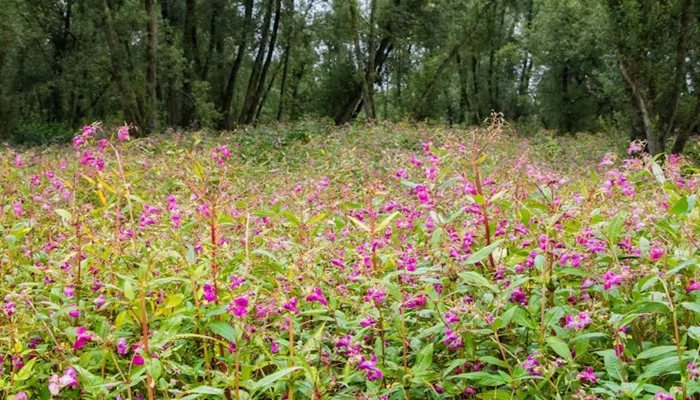The Surprising Complexity of Plants: A Look at Invasive Species.
While many people consider plants to be simply beautiful organisms, recent research reveals they are far more complex than previously thought. Alien species, often referred to as “monster plants,” show that plants engage in fascinating and competitive battles in their environments.
The introduction of alien plants to the UK began in the Victorian era when plant hunters brought back specimens from around the world. Over time, these plants adapted to their new surroundings, leading to some surprising survival rates. Some species thrive so well that they endanger local flora, prompting regulations that require permits to cultivate them.
One notable example is Himalayan balsam (Impatiens glandulifera). This invasive plant grows rapidly and can overshadow native species, largely because it lacks the natural predators it would have faced in its native habitat. Himalayan balsam, which hails from the western Himalayas, was introduced to Britain in the 1800s. Its striking pink flowers and unique seed pods, which can propel seeds up to seven meters, captured the attention of gardeners. Once it escaped cultivation, it spread quickly along rivers and into woodlands, often reaching heights of up to four meters, while in its native range it typically grows only half as tall. Conservationists participate in “balsam bashing” during the summer months to control its spread.
In the wild, plants often engage in complex relationships with fungi and bacteria to access essential nutrients. However, when an alien species like Himalayan balsam is introduced, it can alter the soil’s microbial community, which may hinder the growth of native plants. Research indicates that Himalayan balsam changes the balance of mycorrhizal fungi and soil bacteria, leading to accelerated growth for itself but reduced growth for native flora after it has been removed.
Other invasive species in the UK include rhododendron (Rhododendron ponticum), which can grow up to eight meters tall and outcompetes native plants in woodlands, and hosts harmful pathogens that threaten local trees. Japanese knotweed (Reyneutria japonica) can reproduce from tiny fragments and poses a significant risk to property values, as homeowners must declare its presence when selling their homes. Giant hogweed (Heracleum mantegazianum), native to Central Asia, can reach heights of five meters and produces around 20,000 seeds per plant. Its toxic sap can cause severe skin burns.
Invasive species are not limited to the UK; they present challenges worldwide. For example, pine trees introduced to South Africa for timber use excessive water, reducing natural river flow and impacting ecosystems. Kudzu (Pueraria montana), a vine introduced to the US to prevent soil erosion, grows rapidly, suffocating local flora. Gorse (Ulex europaeus), while native to parts of Europe, has spread to other regions, where it increases fire risk and disrupts local ecosystems. Mesquite (Prosopis juliflora), known as the “devil tree,” creates impenetrable thickets that threaten livestock and native plants.
Invasive alien species are a leading cause of biodiversity loss worldwide. Removing them is a costly and challenging endeavor; often, the best we can achieve is to manage their populations. Preventing the introduction of new alien species remains the most effective strategy. Many of the invasive plants in the UK are escapees from the horticultural trade. To help combat this issue, gardeners are encouraged to select native plants for their gardens. Botanical gardens provide an excellent alternative for experiencing diverse plant species without harming local ecosystems.
In conclusion, plants are much more than just ornamental elements; they engage in complex interactions and can significantly impact their environments. By understanding the challenges posed by invasive species, we can better protect native biodiversity and appreciate the intricate world of plant life.


